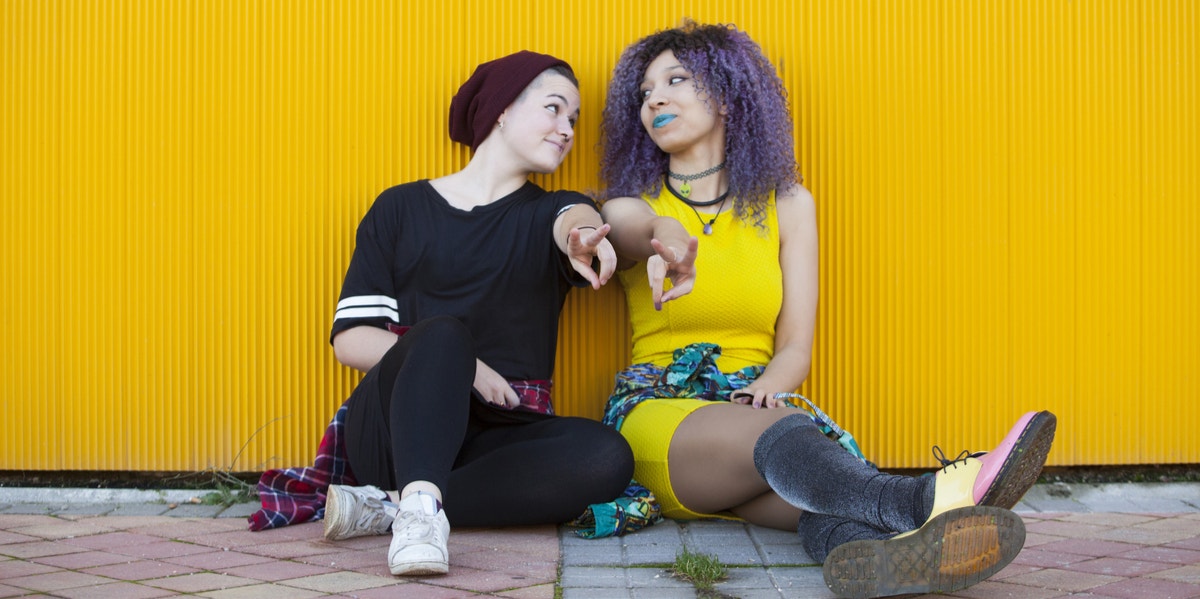Puberty Blockers — The Hormone Treatment Banned In Arkansas — Explained
A new Arkansas law will ban children from the biggest choice of their lives.
 Beatriz Vera / Shutterstock
Beatriz Vera / Shutterstock This week, a painful and horrifying precedent was set in Arkansas state legislature when an anti-trans bill was passed that went further than any of its kind so far.
While other bills have certainly attempted to legislate transgender existence, HB 1570 is the first bill to ban trans youth from any form of gender-affirming care.
And terrifyingly, this may just be the tip of the iceberg. Nearly 100 anti-trans bills under consideration in state legislatures across the country, half of those dedicated to keeping transgender girls and women athletes out of female sports. Many also seek to deny trans people medical care or allow medical providers to deny care to trans people based on their "moral" standing.
We spoke with Sarah Garwood, MD, a Washington University adolescent medicine physician at St. Louis Children’s Hospital who works with transgender youth. She answered some of the most common questions about hormone blockers, or puberty blockers.
What are puberty blockers?
Hormone blockers are medications also called gonadotropin-releasing hormone agonists.
These are used for cisgender patients with precocious puberty, which is the onset of puberty at an abnormally young age, to put a pause on the puberty process.
They are also used for some children with gender dysphoria once they have entered puberty.
How do puberty blockers work?
Gonadotropin-releasing hormone agonists interrupt the pulsatile release of gonadotropin-releasing hormone from the hypothalamus.
This prevents the release of luteinizing hormone and follicle-stimulating hormone from the pituitary gland, thereby preventing the stimulation of gonads (ovaries or testes).
Essentially, puberty blockers can allow a child with gender dysphoria to have time to further explore gender identity and to prevent the development of unwanted secondary sexual characteristics that are incongruent with gender identity.
What does it mean for a child to transition? Does that mean surgery? Is it reversible?
According to Dr. Garwood, transitioning simply refers to the process of changing characteristics to be in line with one's affirmed gender.
This can be social, meaning changing your name and pronouns, trying a new style of hair or clothes. Of course, social transition is 100% reversible.
Medical transition can start around 16 and involves the use of gender-affirming hormones.
This type of transition is partially reversible and refers to the development of secondary sexual characteristics of their affirmed gender (facial hair growth for boys, widened hips for girls, etc.).
After the age of 18, transition may be surgical, but that is entirely up to the individual. Some trans people never have surgery.
Pubertal blockers are 100% reversible.
Although bone density accrual slows during the time puberty blockers are being used, once the blocker is stopped bone density normalizes.
According to a study by the American Academy of Pediatrics, transgender people who had access to pubertal blockers in childhood have lower rates of suicide attempts in adulthood compared to those who did not.
There is no blanket treatment for anyone — every case is different.
"It is important that each patient’s case be addressed on an individual basis with thorough psychological assessment and assurance that their child meets eligibility criteria for blockers," Dr. Garwood said.
"Every medical decision is made by weighing risks compared to benefits for the individual."
If you or your child are considering transitioning, talk to your pediatrician about all the options available, including puberty blockers.
Courtney Enlow is Editor of Pop Culture and Good News at YourTango. Her work has appeared at Vanity Fair, Glamour, Pajiba, SYFY FANGRRLS, Bustle, Huffington Post, io9, and others. She is the former co-host of Trends Like These with Travis McElroy and Brent Black. She has two kids, two dogs, and requires more wine, please.

